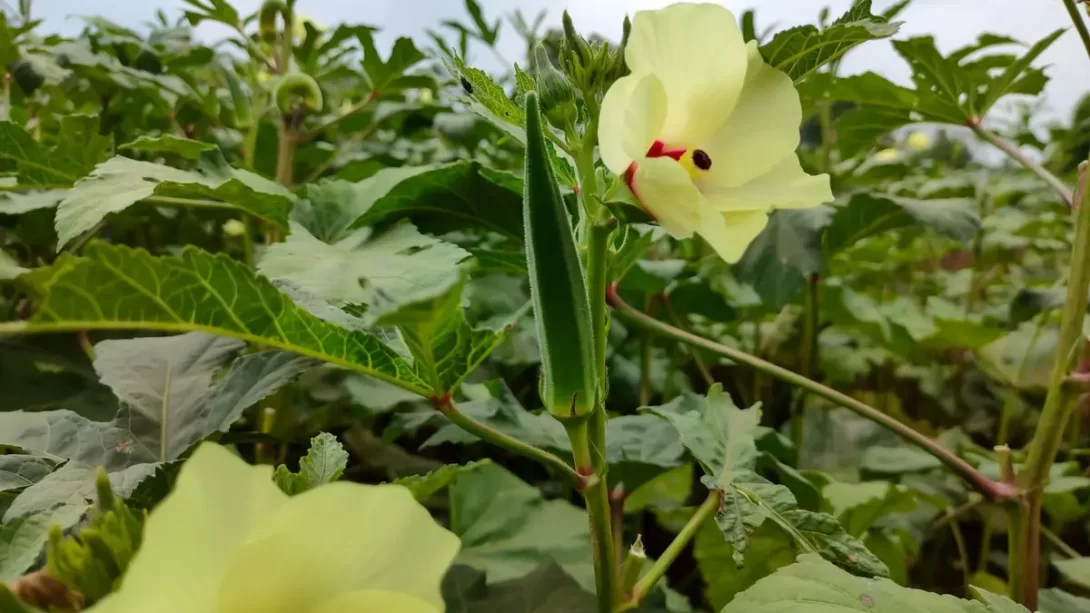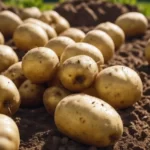Okra (Abelmoschus esculentus), known for its unique texture and flavor, is a staple in many cuisines around the world. Rich in nutrients, this warm-season vegetable can be a prolific producer in your garden. However, many gardeners face challenges in achieving a bountiful harvest. This guide focuses on techniques to increase the yield of your okra plants, ensuring a plentiful and continuous harvest throughout the growing season.
Okra Plant Growth
The okra plant thrives in warm weather and requires specific conditions to produce optimally. It typically grows best in temperatures between 75°F and 90°F (24°C to 32°C). Adequate sunlight is also crucial; okra plants need at least six hours of full sun each day. Soil conditions play a significant role as well; okra prefers well-drained, fertile soil with a neutral pH. Understanding these growth requirements is the first step in maximizing your okra yield.
Choosing the Right Okra Variety
Different okra varieties have varying potential for yield, growth speed, and resistance to pests and diseases. Some popular high-yielding varieties include ‘Clemson Spineless’, ‘Emerald’, and ‘Annie Oakley’. When choosing a variety, consider your local climate and soil conditions. Some varieties are more suited to dry climates, while others thrive in more humid conditions. Researching and selecting the right variety can make a significant difference in your harvest.
Soil Preparation and Fertilization
Preparing your soil before planting is essential for a bountiful okra crop. The soil should be rich in organic matter, so consider adding compost or well-rotted manure before planting. Okra benefits from a balanced fertilizer high in nitrogen and potassium. Apply a balanced 10-10-10 fertilizer at planting time and then side-dress with a nitrogen-rich fertilizer when the first pods start to form. This will provide the necessary nutrients for sustained growth and fruit production.
Proper Planting Techniques
Sowing okra seeds properly is crucial for a good yield. Plant okra seeds about 1/2 to 1 inch deep in the soil, and space them approximately 12 to 18 inches apart. This spacing allows for adequate air circulation and reduces competition for nutrients. If you’re starting seeds indoors, transplant the seedlings when they are 3 to 4 inches tall and after the danger of frost has passed. Proper planting ensures healthy root development, which is vital for a productive okra plant.
Watering and Mulching Practices
Efficient watering is key to boosting okra production. Okra plants require consistent moisture, especially during flowering and pod formation. Water the plants deeply once a week, providing about an inch of water each time. This encourages deep root growth, which is essential for healthy plants and high yields. Avoid over-watering, as it can lead to root rot and other diseases. Mulching around the okra plants with organic materials like straw or wood chips helps retain soil moisture, regulate soil temperature, and suppress weeds.
Enhancing Pollination
Pollination is crucial for fruit set in okra. While okra flowers are typically self-pollinating, you can enhance pollination and thus increase yields. Gently shaking the plants or tapping the stems near the flowers can help distribute pollen. Attracting pollinators like bees and butterflies to your garden is also beneficial. Planting flowering herbs and plants nearby can draw these helpful insects, boosting the pollination rates of your okra plants.
Pest and Disease Management
To maximize okra production, it’s vital to manage pests and diseases effectively. Common pests like aphids, flea beetles, and stink bugs can be controlled through regular inspection and organic methods like neem oil or insecticidal soap. Diseases such as powdery mildew and root rot can be minimized by ensuring good air circulation around plants and proper watering techniques. Employ crop rotation and avoid planting okra in the same location year after year to prevent disease build-up in the soil.
Regular Pruning and Harvesting
Pruning okra plants can encourage more prolific fruiting. Remove any lower leaves that are yellowing or dying to improve air circulation and reduce disease risk. Additionally, regular harvesting is crucial for encouraging more production. Okra pods should be harvested when they are 2 to 3 inches long for most varieties. If pods are left to mature on the plant, it signals the plant to stop producing more pods. Daily harvesting can significantly increase the overall yield of your okra plants.
Conclusion
Maximizing okra production in your garden involves a blend of careful planning, attentive cultivation, and consistent maintenance. From selecting the right variety to suit your climate and soil, to preparing the soil with the right nutrients, each step plays a crucial role in determining your okra yield. Remember, watering and mulching practices are essential for maintaining the moisture and health of the soil, which directly impacts plant growth.
Enhancing pollination, either through attracting natural pollinators or manually assisting in the process, can significantly increase fruit set. Vigilantly managing pests and diseases will keep your plants healthy and more productive. And perhaps most importantly, regular pruning and harvesting not only improve plant health but also encourage the plant to produce more fruit.
Growing okra can be a rewarding experience, offering not just delicious pods for your culinary creations but also the satisfaction of nurturing plants from seed to harvest. By applying these strategies, you can enjoy a bountiful okra harvest, rich in both quantity and quality. So, go ahead, plant your seeds, and watch as your okra plants flourish under your care, providing a plentiful harvest throughout the growing season.




